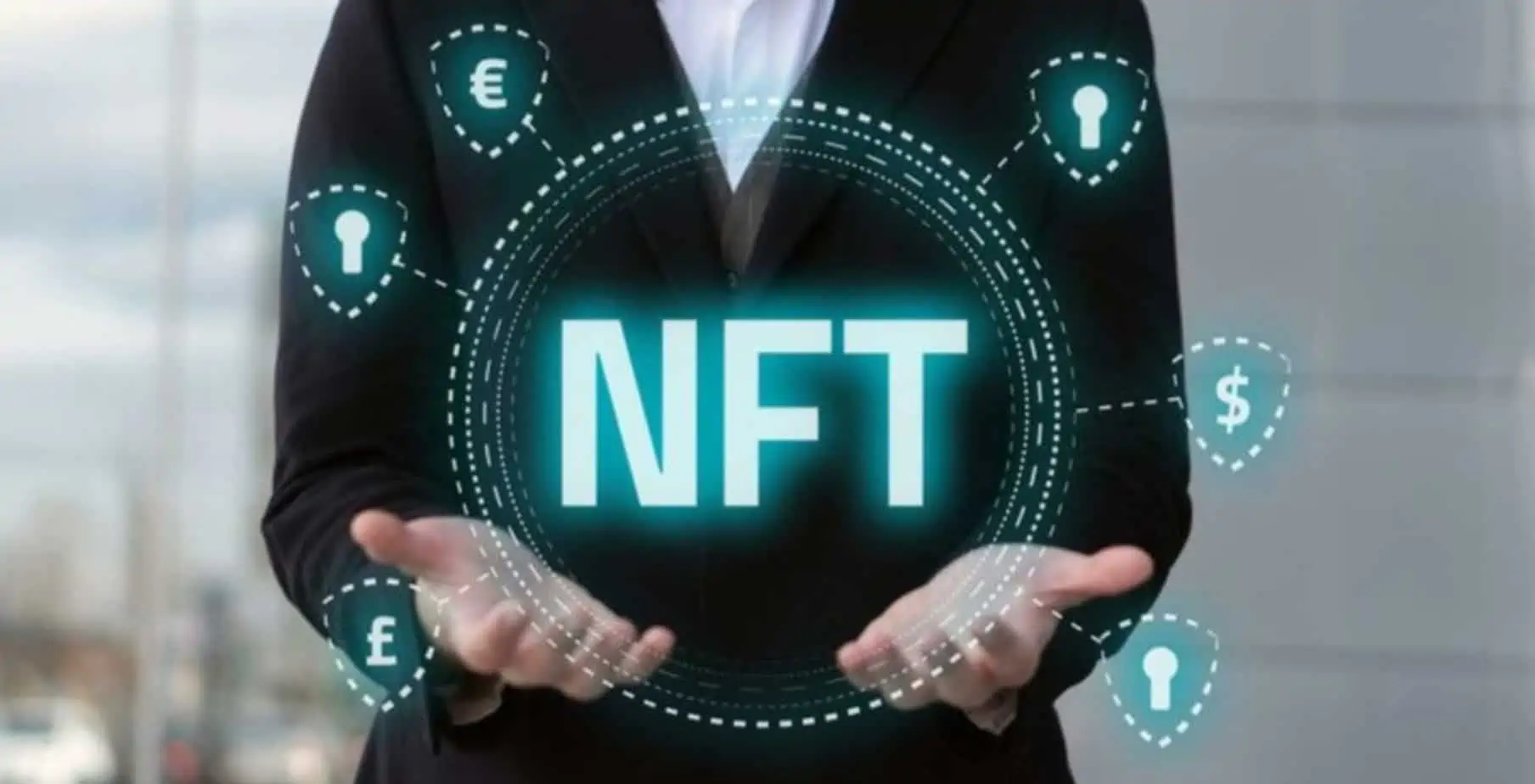Public attention from all over the world towards NFTs or Non-fungible Tokens has increased significantly during 2021. As a result, the industry claims to have experienced record sales as NFTs continue transforming how people perceive sports, music, and art.
It is estimated that by the end of 2022, the total NFT sales volume will cross the $27 billion mark. This is after global giants including Louis Vuitton, Samsung, McLaren, and Nike have started experimenting with the revolutionary technology. The record might appear significant, but it is worth considering the overall potential of NFTs and the number of industries the technology will impact.
Essentially, NFTs can be regarded as tamper-proof tokens representing other assets minted directly on the blockchain. NFTs thrive on the concept of shared blockchain ledgers, making them publicly traceable, and also offer to verify the prevalence and origin of a particular digital asset for the first instance.
NFTs are not simply restricted to digital collectibles. Any intangible or tangible asset is capable of being tokenized –including both physical and digital songs, movies, and real estate. Due to their impressive programmability, NFTs are easily applied to several industries for creating improved transparency. They also help in allowing trustless digital ownership.
Leading NFT Trends 2022
Transformation of the Play-to-Earn Gaming Concept
NFTs have come up with a new vibe for the modern gaming industry. The technology has made crypto-powered, blockchain-enabled play-to-earn games quite a reality. Furthermore, the technology of NFTs is applied to the concept of in-game assets for opening a new chapter in modern gaming history. It is the first time players will be actual owners of the respective assets and be able to sell for a profit on the NFT marketplaces.
Gaming has also accelerated significant interest in dApps (decentralized applications) and DeFi (Decentralized Finance). The trend will be even more prevalent in the number of active wallets that interact with dApps – over 2 million – with half of these coming from gaming.
Revival of the Digital Art Industry
In the art industry, NFTs help present information about the first time in history that the ownership and origin of digital files can be traced and authenticated with the help of blockchain.
At the same time, NFTs can allow the artists to sell the respective art directly to interested buyers or fans. It is enabled with the help of peer-to-peer fashion. Digital tokens are also helpful in introducing new options for monetization in the industry. These include selling the NFTs of some work in progress or providing access to fractionalized NFTs. This offers fans a stake in ensuring the future success of specific artwork. The application of smart contracts to NFTs also helps create new revenue sources and allows artists to reap the overall benefits from the artwork’s secondary sales and royalty payments.
Creation of Fundraising Opportunities for Global Charities
As people all around start realizing the importance of tokenization, global charity organizations are also exploring the NFTs and their potential in the industry. NFTs can help set up charity initiatives in an online and decentralized manner with minimal overhead compared to traditional auctions.
The application of smart contracts to NFTs has led to more profitable charitable events. This is because algorithms can program NFTs to automatically transfer funds to charitable causes with every transaction. Furthermore, smart contracts and NFT algorithms are secured with the help of blockchain technology. This helps offer a transparent database that can be publicly traced to guarantee that funds are reaching the pre-decided charity organization. Additionally, charity payments that are executed with cryptocurrency help provide reduced transaction fees and near-instant settlements.
The application of NFTs to charitable initiatives helps introduce new streams of revenue to companies. For example, it is possible to tokenize and program an awareness video to automatically send royalty payments every Time it is played or shared.
Enabling Social Perks and New Subscription Models
NFTs help in bringing top-class programmability to reality. It is one of the most lucrative attributes of technology, and they offer a wide range of advanced utilities to the end-users. This also opens up the opportunity to develop new subscription models and online social benefits.
For instance, Time magazine in the United States of America is at the forefront of the established publishing companies experimenting with NFTs to serve as an alternative digital subscription model. TIMEPieces –their all-new initiative, provides NFTs from over 40 unique artists while making the owner a community member at the same time. TIMEPieces serves the role of an alternative to the digital subscription of Time. It helps unveil all content for NFT holders while offering them access to unique digital events and experiences.
Disruption of Conventional Industries with Asset Tokenization
In addition to creating NFTs and their assets in the metaverse, NFTs can also be utilized for tokenizing both intangible and tangible assets. Every NFT functions as a traceable and censorship-resistant ownership certificate for an asset. This helps unveil the most significant information about the asset publicly with the help of the blockchain ledger.
Therefore, NFTs can be utilized for tokenizing even real-world assets –including real estate. For example, LABS –a real estate investment ecosystem from Indonesia, delivers access to fractionalized NFTs of timeshare resorts. For every resort, LABS offers auctions for calendar days in the form of NFTs for ensuring real estate investments are more accessible to the general public. Similar initiatives can get famous. Ultimately, it would result in a highly democratized real estate investment era.
Conclusion
The rapid rise of NFTs might have accelerated some skepticism at the same time. Still, NFTs have successfully proven their overall utility as they continue becoming one of the essential components of the metaverse.

